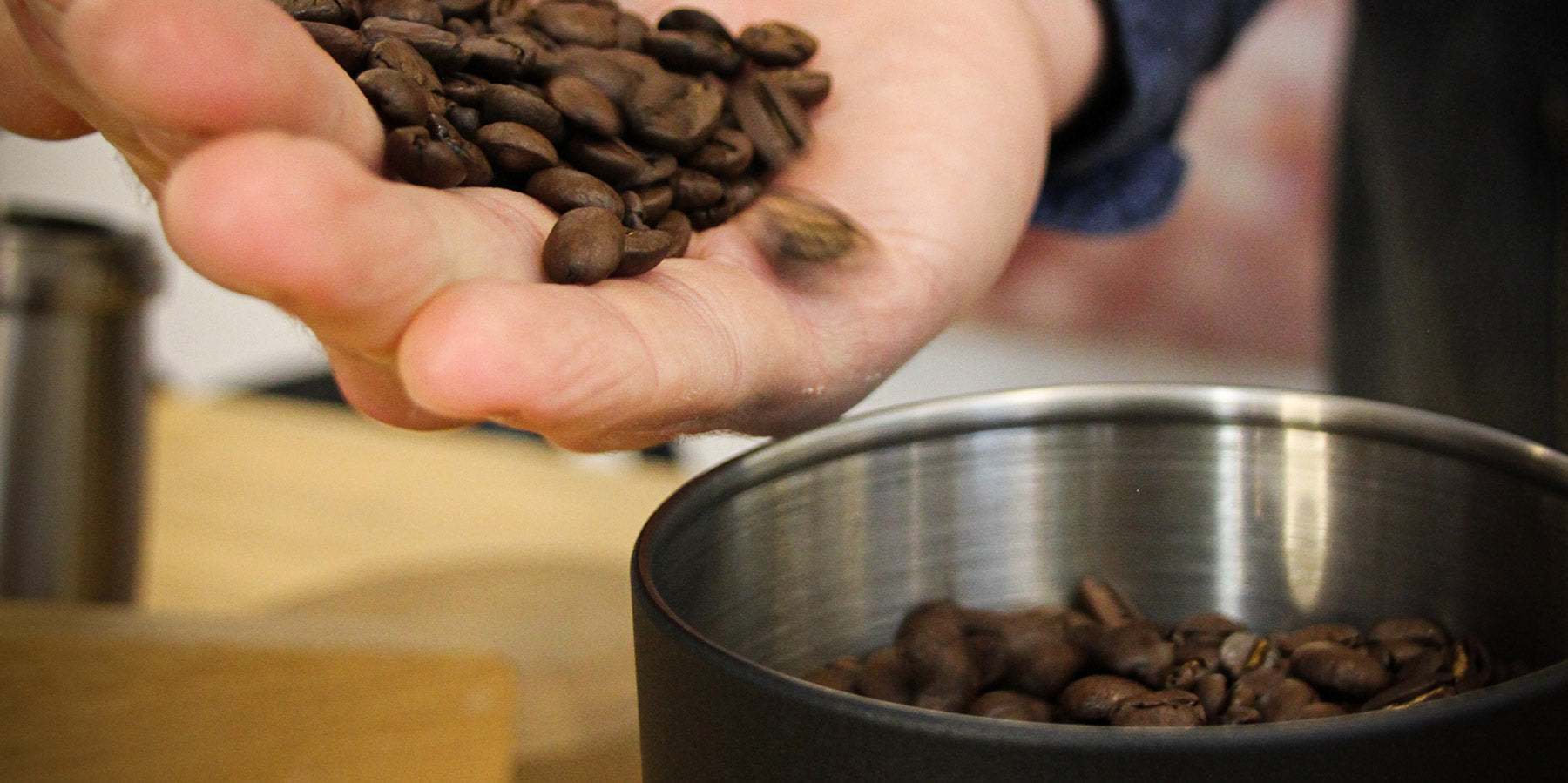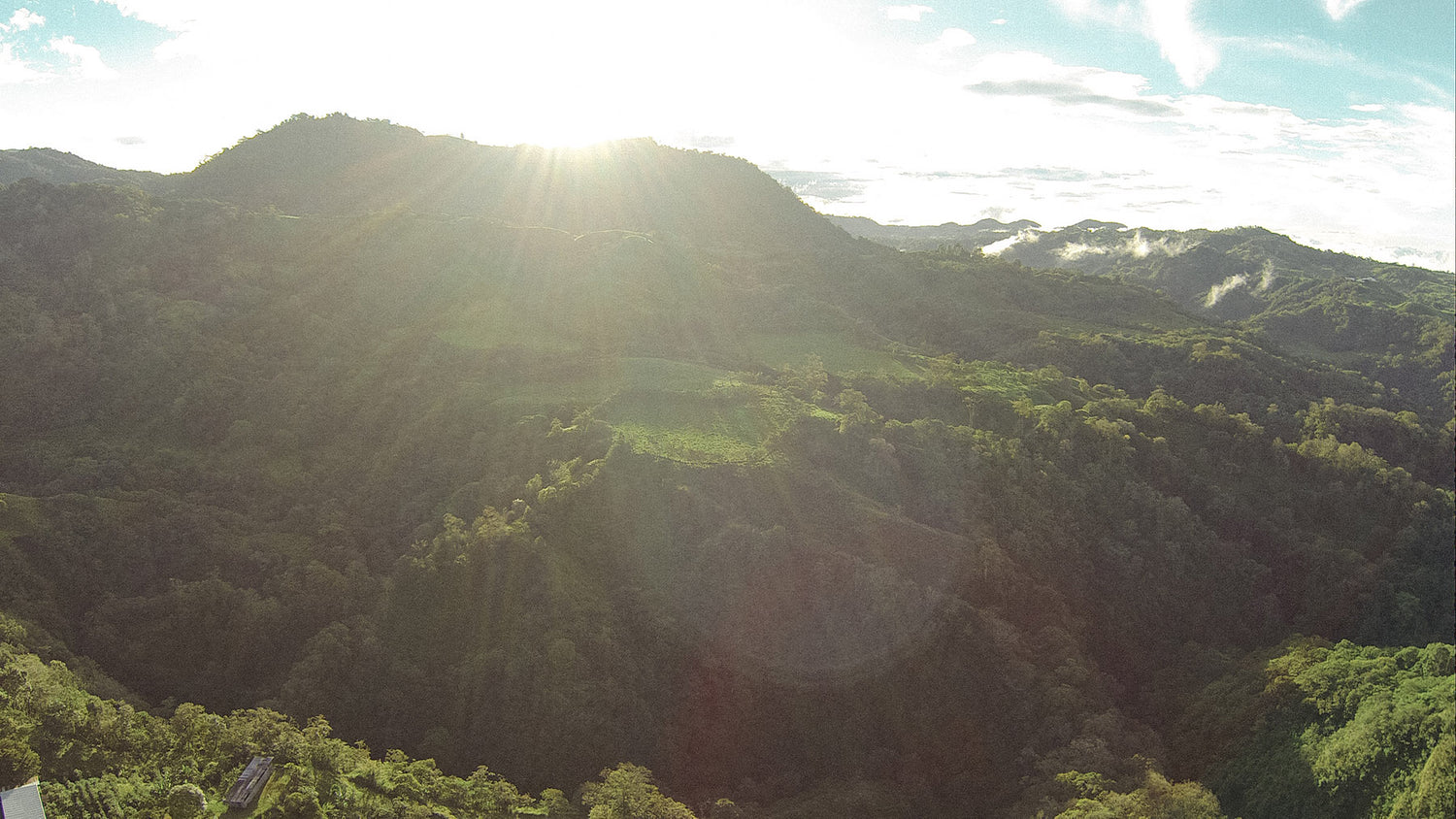Choosing the right coffee beans is also a basic part of barista knowledge! The country of origin, variety, preparation and, above all, the processing in our wild coffee roastery determine which type of preparation the coffee is suitable for and which taste characteristics you can expect. When preparing the coffee, the main thing is to emphasize the delicious country-specific notes of the coffee, or the taste of the coffee should harmonize with the milk in a cappuccino, for example. You can find out how to choose the right coffee beans in this article and in our new YouTube video ! Elias Fischbacher from the wild coffee roastery wishes you lots of fun discovering.
Selection of coffee beans - Excellent grades vary from country to country
Each country of origin of coffee offers different characteristics in terms of climate, soil composition, varieties, rainfall, etc. This climatic diversity also creates many different typical flavors that differ from country to country. Specialty coffees from Ethiopia are known for their floral taste paired with stone fruit notes , Kenyan coffees captivate with a sweet and tangy flavor world & the fine coffees from Brazil are known for classic nutty coffee enjoyment, which is highlighted by creamy, round accents.
Specialty coffees from South America are also very exotic and always offer a new highlight. You've probably already noticed that the selection of coffee beans is huge! So you should go with your own taste or that of your friends or customers. Blends also create a whole new range of flavors. With Wildkaffee, only our espresso blends are blends, all other coffees are single-origin coffees!
Selecting coffee beans – The effects of climate on coffee!
The coffee plant is quite sensitive. It doesn't like it too warm, but not too cold either. The coffee plant, also called Coffea, also needs rainfall. Again, not too much, but not too little. The same applies to sunlight, not too much, but not too little. This is why coffee cannot be cultivated everywhere, but only in the so-called coffee belt between the 23rd parallel north and the 25th parallel south. Here, around the equator, there is a humid-dry alternating climate , which is particularly characterized by the fact that there is sufficient rainfall and no extreme temperatures.
Decisive factors for the successful cultivation of coffee
Temperature: Average between 20 and 26 degrees. Cooler nights are okay, but the coffee plant doesn't like temperatures below 15 degrees.
Humidity: The coffee plant needs humidity, but not too much. Rainfall should be around 1500-2000 mm per year , but not much more.
Sunlight: Sunlight is also an important factor for successful coffee cultivation! However, there should not be more than 5 hours of sunshine per day .

Selection of coffee beans - taste determined by processing?
First of all, the question arises as to what processing actually is . In principle, this process is very simple to explain. Processing is the process in which the flesh of the coffee cherry is separated from the kernel of the bean. It is primarily the kernels of the coffee cherry that are sold. This is the green coffee that is processed into delicious roasted coffee in numerous roasting plants around the world. The many different variants can have a significant impact on the taste of the end product ! That is why processing stations and farms are experimenting in order to respond to new trends and customer demand.
In recent years, and up until today, a lot of play has been done with the fermentation of cherries. This develops special, fruity notes that give the cup an exotic profile. This creates a very special taste experience, especially with specialty coffee , which many people are not familiar with from coffee. However, these special preparations are usually used for filter coffee . Espressos are usually prepared in the classic natural, washed or honey way, so that the typical nutty-chocolatey variety of flavors can arise.
The right milk for cappuccino - the right roasting level, the right preparation!
Let's address an extremely important point: the right roasting level for the respective preparation method! Let's start with dark roasts. You can recognize these by their dark brown color and roasted, chocolatey smell . Dark roasts are typically used for preparation in a portafilter ! Dark roasts provide the typical chocolatey taste paired with intense nutty notes. The espressos are also ideal for coffee drinks with milk such as flat white , cortado, cappuccino and the like!
Medium roasts are our all-rounders . The mostly single-origin country coffees are ideal for strong filter coffees , mild espressos or espresso-based drinks, as well as other preparation methods such as AeroPress , French Press or stovetop pot ! Medium roasts typically contain a little more acid than dark roasts, which is why the cup profile has significantly fruitier accents , which are nevertheless paired with fine, chocolaty, full-bodied notes.
Single-origin specialty coffees are normally light roasted . This makes the beans actually lighter in appearance and, depending on the preparation and country of origin, they also smell significantly fruitier. No wonder, because light roasts contain significantly more acid and therefore taste sweeter and tangier than medium or dark roasts . The best way to prepare specialty coffees is in a hand filter , Chemex or AeroPress . The filter methods reflect the variety of flavors of the coffee in a nuanced and clear way. Those who like to experiment can also prepare light roasts in a portafilter. This creates particularly fruity espressos that invite you to experiment with coffee.

Further barista knowledge for the selection of coffee beans - Arabica Robusta
What else should you know about choosing coffee beans? The difference between Arabica and Robusta, of course! The slogan "100% Arabica" often appears in advertisements. Not many people are aware that this advertising slogan is not actually a sign of quality. In general, Arabica coffee and Robusta coffee are the most economically important types of coffee plants. That is why most people know exactly these two types. However, around three times more Arabica coffee is grown worldwide. In general, however, the two types are very different.
Robusta beans are significantly richer in chlorogenic acids and caffeine. The high concentration of chlorogen can lead to heartburn and stomach pain . Therefore, Arabica is generally considered to be more digestible. There are also differences in appearance. Arabica beans are large, flat and more oval , while Robusta beans are smaller and rounder. Let's go back to the caffeine content: Arabica contains around 1.1 - 1.7% caffeine and Robusta 2 - 4.5% .
The caffeine content is therefore not affected by the roasting process. This simply depends on the altitude at which the coffee plant is cultivated. Caffeine is the substance that protects the plant from pests: that is, the higher the coffee plant is cultivated, the lower the caffeine content , as there are fewer pests. Highland coffees that are grown at over 2000 meters, e.g. in Ethiopia , are therefore particularly low in caffeine.
Robusta is mostly used in espresso blends to obtain a stable crema. Robusta contains around 50% less oils and fats and therefore ensures a thick, stable crema in espresso blends. The woody, earthy taste also blends perfectly with the Arabica beans, creating a strong cup profile that is particularly appreciated in Italy.

Conclusion!
Choosing the right coffee beans plays a big role in barista knowledge . Because not all coffee is the same. The taste and the properties in terms of preparation are determined by an interplay of the country of origin, soil conditions, climate, variety, preparation and subsequent processing , i.e. roasting. When choosing the right coffee beans, we generally differentiate between roasts: light roasts for filter coffee, medium roasts for all preparation methods and dark roasts for portafilters. You should also know the difference between Arabica and Robusta. Arabica (900-2000m) is grown at a much higher altitude than Robusta (0-900m) .


